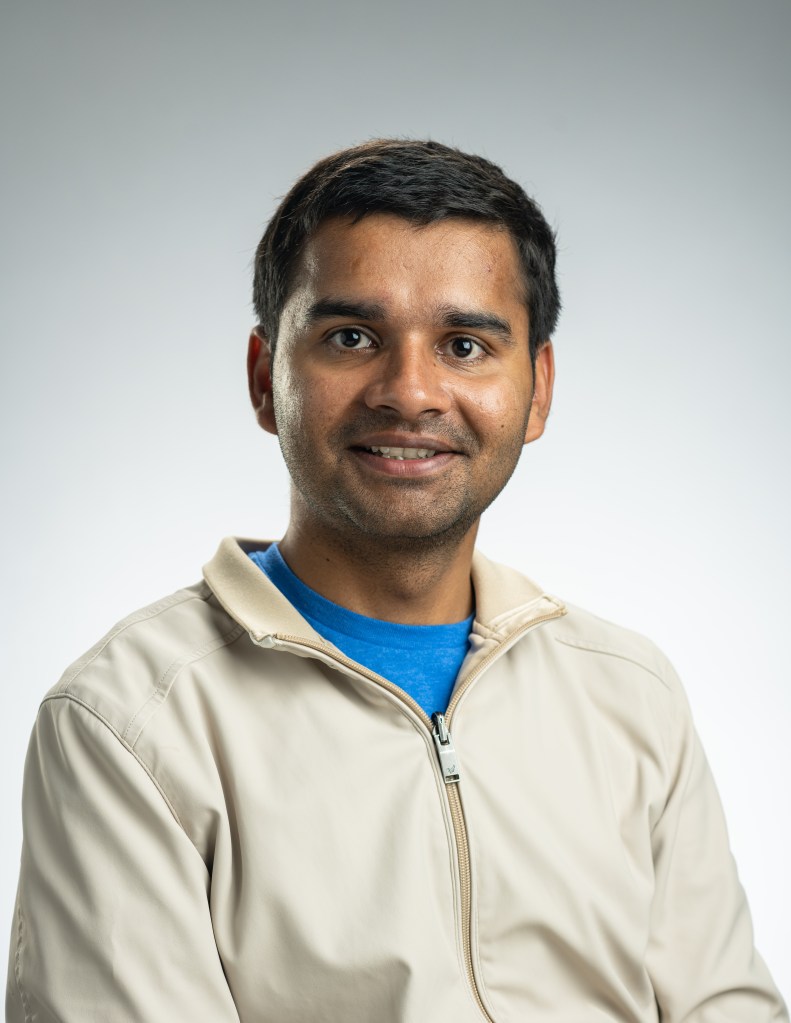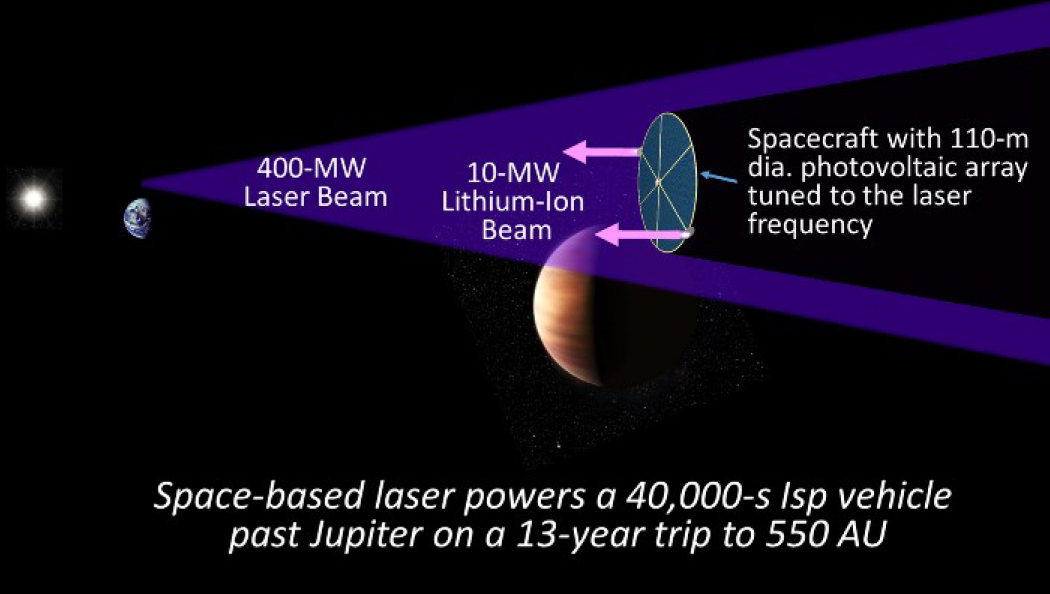John Brophy
NASA Jet Propulsion Laboratory
Our breakthrough architecture uses a kilometer-scale, multi-hundred-megawatt phased-array laser to beam power to a vehicle that converts it to electrical power for a multi-megawatt electric propulsion system that produces a specific impulse of 58,000 s. Such a system would enable missions with characteristic velocities of 100 to 200 km/s, and would enable a mission to the solar gravity lens location of 550 AU in less than 15 years. Our Phase I study investigated all of the key assumption made in the original proposal including: the feasibility of developing photovoltaic arrays with an areal density of 200 g/m^2; the feasibility of developing a highpower electric propulsion system with a specific power of less than 0.3 kg/kW; the feasibility of developing photovoltaic cells tuned to the frequency of the laser with efficiencies of greater than 50%; and the feasibility of being able to point the laser array with the required accuracy and stability necessary to perform the reference mission to the solar gravity lens location. The Phase I work identified plausible approaches for achieving each of these technology goals. In addition, the Phase I work looked at the system engineering of the entire propulsion system architecture with the objective of minimizing the laser aperture size. The original proposal postulated the existence of a phased-array laser with a 10-km diameter aperture, a 100-MW output power at a laser frequency of 1064 nm. This laser was assumed to power a 70-MW electric propulsion vehicle with a 175-m diameter photovoltaic array directly coupled to lithium-fueled ion thrusters operating at a specific impulse of 58,000 s. The Phase I scaling work indicated that a better approach would be a laser with a 2-km diameter aperture with an output power of 400 MW at a laser frequency of 300 nm driving a vehicle with a 110-m diameter photovoltaic array powering a 10 MW electric propulsion system at a specific impulse of 40,000 s. In Phase II we propose to continue to develop the Phase I concept in the context of the solar gravity lens mission. We will address the stilloutstanding technical feasibility issues including: (1) Demonstrating that photovoltaic (PV) coupons can be operated at more than 6 kV in the plasma environment created by the lithium-ion propulsion system. (2) Demonstrating PV cell efficiency of 50% or greater for monochromatic inputs. (3) Modeling the characteristic of the lithium plasma plume created by the ion propulsion system. (4) Demonstrating operation of a small aperture (0.3 m to 1 m dia.), low power (a few hundred watts) phased array with long a coherence length and beacon feedback that is scalable to large apertures. (5) Investigation of beacon phase locking for long round-trip light time delays. (6) Investigating laser location impacts on cross-track thrust. Finally, the proposed Phase II work will develop a technology roadmap including technology demonstration missions recommended as stepping stones to get to the final system architecture.





























